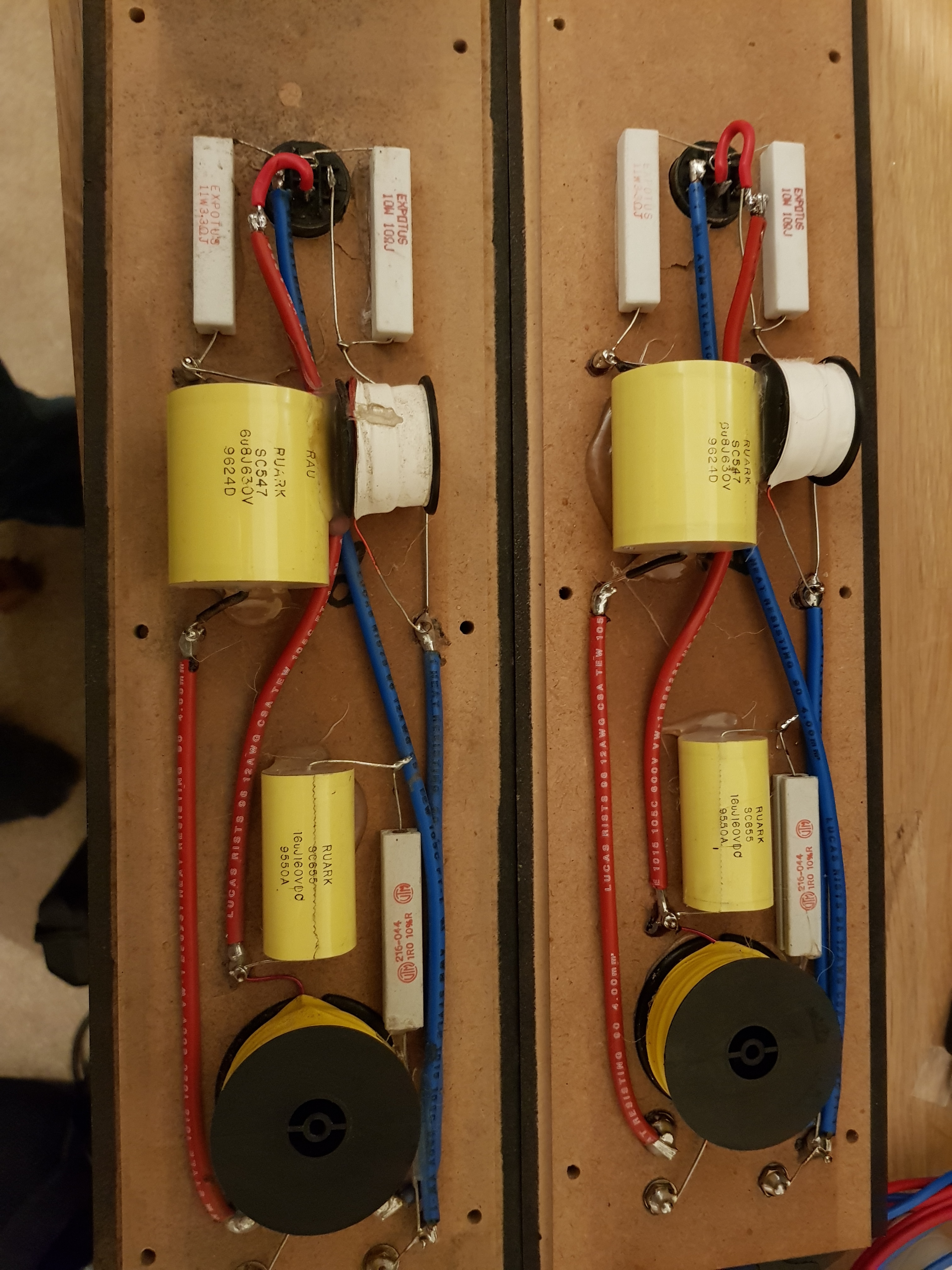gingermrkettle
Deep vein trombonist
Just picked up a cheap pair of Ruark Equinoxes. The plan is to use them in a system which already has an active crossover in it (a 24dB/octave LR centred on 3.1kHz but which can have the crossover frequency changed through different resistor combinations), but the standard crossover has a 3.3R in series with the tweeter and a 10R in parallel which as I understand it is a standard thing to damp the Scanspeak tweeter in addition to a standard 2nd order LC network.
Could you just replicate the 3.3R/10R network on the output of the treble amp?
Could you just replicate the 3.3R/10R network on the output of the treble amp?


